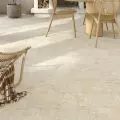Is it possible to „manufacture” a better future? Is there a way to design and create buildings that meet the challenges of rapidly changing times? What technologies to reach for and what materials to use? Solutions for the future of construction were sought by participants of the international conference Manufacturing Brighter Future in Krakow.
The three-day conference at the Manggha Museum of Japanese Art and Technology opened with lectures by guests from the United States, Chris Sharples, an architect from the SHoP studio, and Anna Dyson, a professor at Yale University. A webcast of the event's opening lectures can be viewed here.
time to rethink the way we work
The conference on the second day was opened by Erin Nickerson, General Consul of the United States in Krakow, who introduced the idea of the Blue Dot Network — an initiative that supports investment in high-quality infrastructure projects. The projects certified in this way are intended to, among other things, promote sustainable and inclusive social growth and economic development, support proper management of public finances and create climate-resilient solutions.
Erin Nickerson, Consul General of the United States in Krakow
© organizers archive
Using examples of projects by New York-based SHoP Architecture, Chris Sharples talked about the creation of 3D models as sources of integrated information, so that everyone involved in the process has access to them and implementation is more efficient.
Chris Sharples (SHoP Architects)
© organizers archive
In designing the Barclays arena in Brooklyn, the architects planned a facade composed of twelve thousand unique elements. Like a jigsaw puzzle, each of them was assigned a specific location. To avoid errors in both production and installation, the architects created digital instructions for each part of the façade puzzle, as well as a phone app for scanning the panels and tracking them through each step. With the virtual model, the client also received real-time graphical progress updates.
design of the Barclays arena in Brooklyn (SHoP Architects)
© organizers archive
Sharples called for rethinking the way architects work and thinking of design as a manual for creating a building. In his opinion, what is the key to a better future in architecture?
it's time to start thinking about the entire life cycle of a building
Professor Anna Dyson, who conducts interdisciplinary research on the development and implementation of new systems focused on the challenge of metabolizing energy, water and materials in architecture, emphasized the need to think about the entire life cycle of buildings — from sourcing materials to reusing them. You can read more about this in a report Dyson co-authored, Building materials and the climate: Constructing a new future.
Prof. Anna Dyson (Yale Schools of Architecture and Environment); a roadmap to a low-carbon future for construction
© organizers archive
Prof. Dyson pointed out the importance of locating individual construction elements in order to be able to reuse or repair them later, so it is best to think about the future recycling of materials already at the design stage. At the same time, she pointed out that this is not just the task of architects — for the sake of the future, we need to strengthen various collaborations. An example of such an approach is the design of a modular multifamily building in Myslowice, the result of the efforts of a university (Cracow University of Technology) and a business (DMDmodular company).
Dyson pointed to three basic steps we need to take — avoiding unnecessary production of raw materials, building with fewer materials; change — using ethically produced low-carbon building materials and bio-based materials; and improving the quality of conventional materials such as concrete, steel and aluminium by radically decarbonizing them and using these non-renewable, high-carbon materials only when absolutely necessary.
Prof. Anna Dyson (Yale Schools of Architecture and Environment); biobuilding as a carbon storehouse
© organizers archive
Dr. Ewelina Wozniak-Szpakiewicz, president of DMDmodular, a company that creates modular solutions, also talked about circularity in architecture. She emphasized the role of architects in educating clients, the validity of creating a prototype to avoid numerous changes at further stages of implementation, and acting in accordance with the principles: DFMA, design for manufacture and assembly (which allows generating as little waste as possible); DFD, design for disassembly (not demolition!) and DFP, design for production.
Dr. Ewelina Wozniak-Szpakiewicz (DMDmodular)
© organizers archive
The DFD theme also appeared in a presentation by Dr. Aleksandra Witeczek of the Silesian University of Technology. She presented the Circl pavilion in Amsterdam, designed by de Architekten Cie studio, as an example of such a solution. From the beginning, the architects envisioned the reuse of the materials used in it — so each element has its „passport” included in the so-called digital twin, which will allow tracing its current location and plan its further fate. It's not short of surprises, as an insulating layer for the ceiling, the architects used old jeans of employees and partners of the bank for which the building was commissioned.
AI in architecture
In discussions about the future of architecture, the topic of artificial intelligence could not be left out. John DeFazio, an assistant professor at the New York Institute of Technology, stressed that technology can give design freedom, but pointed out the pitfalls associated with it. How, in his opinion, can AI help architects, and what risks does it carry?
The conference was organized by the Committee on Urban Planning and Architecture of the Cracow Branch of the Polish Academy of Sciences, the Tadeusz Kosciuszko Faculty of Architecture of the Cracow University of Technology, the Faculty of Architecture and Fine Arts of the Andrzej Frycz Modrzewski Cracow Academy and the School of Architecture and Design of the New York Institute of Technology.
We asked prof. Artur Jasiński, one of the conference organizers, to summarize the event:

























































































































